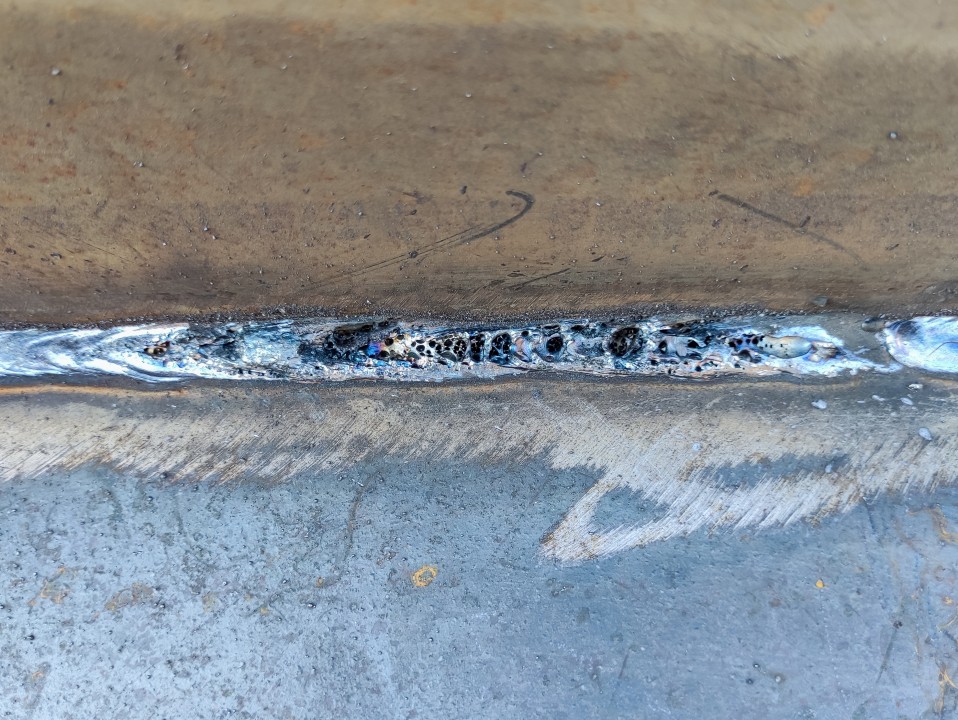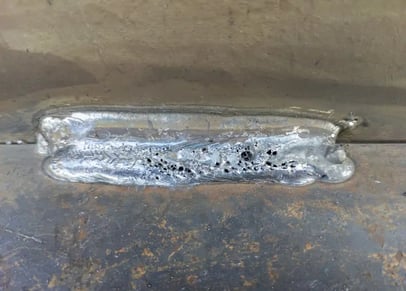Professional Advice on What is Porosity in Welding and Just How to Address It
Professional Advice on What is Porosity in Welding and Just How to Address It
Blog Article
The Science Behind Porosity: A Comprehensive Guide for Welders and Fabricators
Comprehending the intricate mechanisms behind porosity in welding is important for welders and producers aiming for impeccable workmanship. As metalworkers look into the midsts of this sensation, they discover a globe governed by various aspects that influence the development of these tiny gaps within welds. From the structure of the base products to the ins and outs of the welding process itself, a plethora of variables conspire to either exacerbate or reduce the presence of porosity. In this detailed guide, we will untangle the scientific research behind porosity, exploring its effects on weld quality and unveiling progressed strategies for its control. Join us on this journey through the microcosm of welding imperfections, where accuracy satisfies understanding in the quest of perfect welds.
Understanding Porosity in Welding
FIRST SENTENCE:
Assessment of porosity in welding discloses important insights into the honesty and quality of the weld joint. Porosity, identified by the presence of tooth cavities or spaces within the weld metal, is a typical concern in welding processes. These voids, otherwise effectively attended to, can compromise the structural integrity and mechanical properties of the weld, bring about potential failures in the ended up product.

To detect and evaluate porosity, non-destructive screening approaches such as ultrasonic testing or X-ray assessment are usually employed. These techniques enable the recognition of inner flaws without compromising the stability of the weld. By evaluating the size, shape, and distribution of porosity within a weld, welders can make enlightened decisions to boost their welding procedures and accomplish sounder weld joints.

Aspects Influencing Porosity Formation
The occurrence of porosity in welding is influenced by a myriad of aspects, varying from gas securing efficiency to the complexities of welding parameter settings. Welding specifications, including voltage, current, take a trip rate, and electrode type, additionally impact porosity development. The welding method employed, such as gas steel arc welding (GMAW) or protected metal arc welding (SMAW), can affect porosity formation due to variants in warmth circulation and gas insurance coverage - What is Porosity.
Results of Porosity on Weld Top Quality
The existence of porosity also compromises the weld's resistance to rust, as the trapped air or gases within the voids can respond with the surrounding setting, leading to destruction over time. In addition, porosity can prevent the weld's capacity to hold up against stress or impact, more threatening the overall quality and reliability of the welded framework. In critical applications such as aerospace, vehicle, or structural buildings, where security and sturdiness are critical, the destructive impacts of porosity on weld high quality can have severe repercussions, stressing the significance of minimizing porosity with appropriate welding techniques and treatments.
Techniques to Lessen Porosity
Additionally, utilizing the suitable welding specifications, such as the appropriate voltage, present, and take a trip rate, is important in avoiding porosity. Preserving a consistent arc size and angle during welding additionally aids lower the possibility of porosity.

Moreover, selecting the right securing gas and preserving appropriate gas circulation prices are vital in reducing porosity. Utilizing the appropriate welding method, such as back-stepping or employing a weaving motion, can also assist distribute warmth evenly and decrease the opportunities of porosity formation. Guaranteeing appropriate air flow in the welding setting to get rid of any kind of possible resources of contamination is important for accomplishing porosity-free welds. By implementing these methods, welders can successfully minimize porosity Your Domain Name and produce top quality navigate here welded joints.

Advanced Solutions for Porosity Control
Implementing cutting-edge innovations and ingenious methods plays a pivotal role in achieving remarkable control over porosity in welding processes. Additionally, using sophisticated welding techniques such as pulsed MIG welding or customized environment welding can likewise assist reduce porosity concerns.
An additional sophisticated remedy entails making use of innovative welding tools. Making use of equipment with integrated features like waveform control and advanced power resources can enhance weld top quality and lower porosity risks. Furthermore, the execution of automated welding systems with accurate control over criteria can substantially lessen porosity defects.
Furthermore, incorporating advanced surveillance and assessment technologies such as real-time X-ray imaging or automated ultrasonic screening can assist in spotting porosity early in the welding procedure, enabling for prompt corrective activities. On the whole, integrating these sophisticated solutions can significantly enhance porosity control and improve the overall high quality of bonded elements.
Final Thought
Finally, recognizing the scientific research behind porosity in welding is hop over to here necessary for welders and fabricators to produce premium welds. By identifying the elements influencing porosity development and executing strategies to decrease it, welders can boost the total weld top quality. Advanced options for porosity control can further improve the welding process and make certain a solid and trustworthy weld. It is necessary for welders to continuously inform themselves on porosity and apply finest practices to achieve optimal outcomes.
Report this page